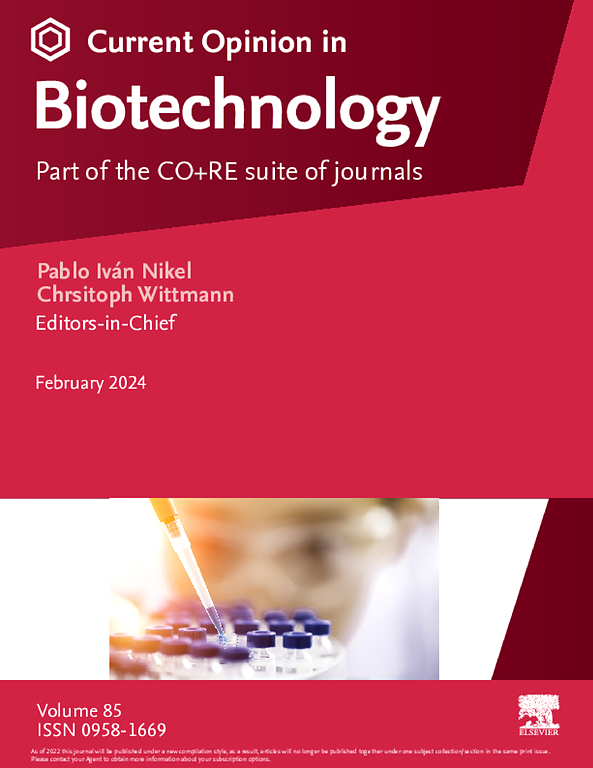Anaerobic microbial core for municipal wastewater treatment — the sustainable platform for resource recovery
IF 7.1
2区 工程技术
Q1 BIOCHEMICAL RESEARCH METHODS
引用次数: 0
Abstract
The requirement for carbon neutrality and bioresource recovery has shifted our views on water treatment from health and pollution avoidance to one of sustainability with water and nutrient circularity. Despite progress, the current process of wastewater treatment is linear, based on core aerobic microbiology, which is unlikely to be carbon neutral due to its large use of energy and production of waste sludge. Here, we outline a shift from aerobic to anaerobic microbiology at the core of wastewater treatment and resource recovery, illustrating the state-of-the-art technologies available for this paradigm shift. Anaerobic metabolism primarily offers the benefit of minimal energy input (up to 50% reduction) and minimal biomass production, resulting in up to 95% less waste sludge compared with aerobic treatment, which is increasingly attractive, given dialogue surrounding emerging contaminants in biosolids. Recent innovative research solutions have made ambient (mainstream) anaerobic treatment a ready substitute for the aerobic processes for municipal wastewater in temperate regions. Moreover, utilising anaerobic treatment as the core carbon removal step allows for more biological downstream resource recovery with several opportunities to couple the process with (anaerobic) nitrogen and phosphorus recovery, namely, potential mainstream anaerobic ammonium oxidation (anammox) and methane oxidation (N-DAMO). Furthermore, these technologies can be mixed and matched with membranes and ion-exchange systems, high-value biochemical production, and/or water reuse installations.
As such, we propose the reconfiguration of the wastewater treatment plant of the futurewith anaerobic microbiology. Mainstream anaerobic treatment at the core of a truly sustainable platform for modern municipal wastewater treatment, facilitating circular economy and net-zero carbon goals.
城市污水处理厌氧微生物堆——资源回收的可持续平台
对碳中和和生物资源回收的要求使我们对水处理的看法从健康和避免污染转变为具有水和养分循环的可持续性。尽管取得了进展,但目前的废水处理工艺是线性的,基于核心好氧微生物学,由于其大量使用能源和产生废污泥,不太可能实现碳中和。在这里,我们概述了废水处理和资源回收的核心从好氧到厌氧微生物学的转变,并说明了可用于这种范式转变的最先进技术。厌氧代谢主要提供最小能量输入(最多减少50%)和最小生物质生产的好处,与好氧处理相比,可减少高达95%的废污泥,鉴于围绕生物固体中新出现的污染物的对话,好氧处理越来越有吸引力。最近的创新研究解决方案已经使环境(主流)厌氧处理成为温带地区城市污水好氧处理的现成替代品。此外,利用厌氧处理作为核心碳去除步骤,可以实现更多的生物下游资源回收,并有机会将该过程与(厌氧)氮和磷回收结合起来,即潜在的主流厌氧氨氧化(anammox)和甲烷氧化(N-DAMO)。此外,这些技术可以与膜和离子交换系统、高价值生化生产和/或水再利用装置混合和匹配。因此,我们建议用厌氧微生物对未来的污水处理厂进行重新配置。主流厌氧处理是现代城市污水处理真正可持续平台的核心,促进循环经济和净零碳目标。
本文章由计算机程序翻译,如有差异,请以英文原文为准。
求助全文
约1分钟内获得全文
求助全文
来源期刊

Current opinion in biotechnology
工程技术-生化研究方法
CiteScore
16.20
自引率
2.60%
发文量
226
审稿时长
4-8 weeks
期刊介绍:
Current Opinion in Biotechnology (COBIOT) is renowned for publishing authoritative, comprehensive, and systematic reviews. By offering clear and readable syntheses of current advances in biotechnology, COBIOT assists specialists in staying updated on the latest developments in the field. Expert authors annotate the most noteworthy papers from the vast array of information available today, providing readers with valuable insights and saving them time.
As part of the Current Opinion and Research (CO+RE) suite of journals, COBIOT is accompanied by the open-access primary research journal, Current Research in Biotechnology (CRBIOT). Leveraging the editorial excellence, high impact, and global reach of the Current Opinion legacy, CO+RE journals ensure they are widely read resources integral to scientists' workflows.
COBIOT is organized into themed sections, each reviewed once a year. These themes cover various areas of biotechnology, including analytical biotechnology, plant biotechnology, food biotechnology, energy biotechnology, environmental biotechnology, systems biology, nanobiotechnology, tissue, cell, and pathway engineering, chemical biotechnology, and pharmaceutical biotechnology.
 求助内容:
求助内容: 应助结果提醒方式:
应助结果提醒方式:


